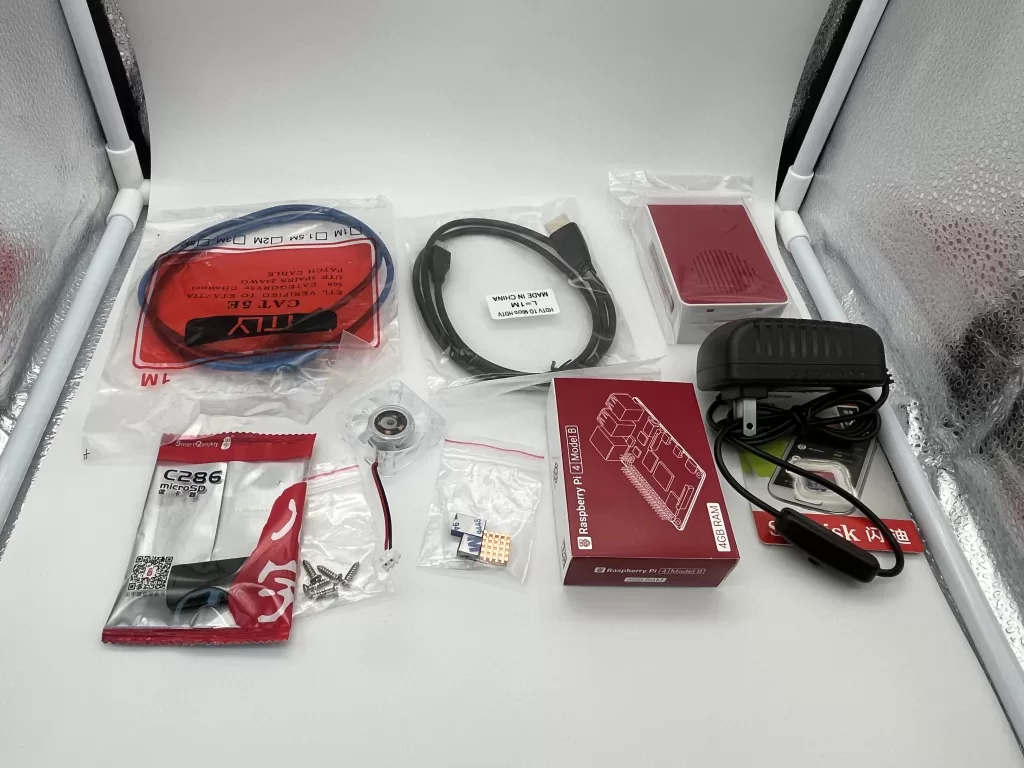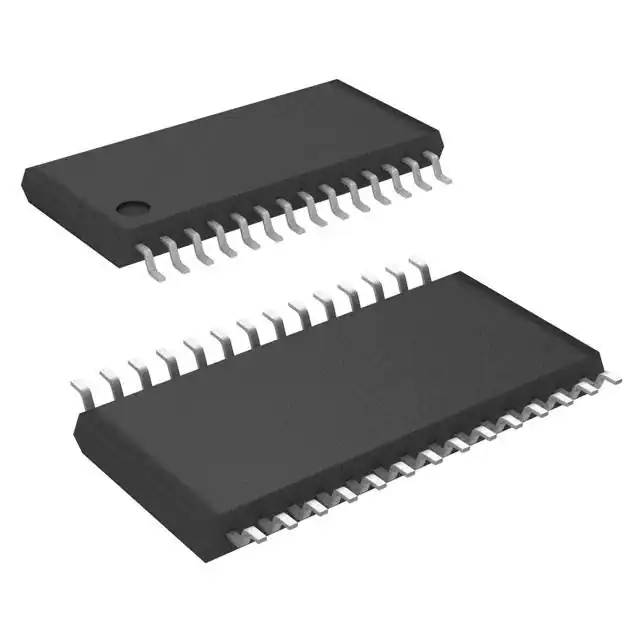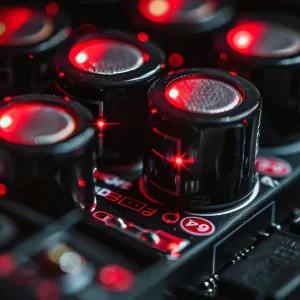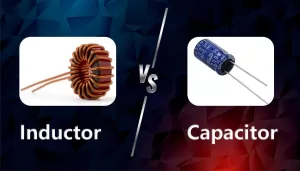In this blog, we aim to provide an in-depth overview of Surface Mount Technology (SMT), a method of electronic component assembly that has transfor...
View detailsRivets vs Bolts: A Head-to-Head Strength Showdown
In this blog, we will delve into the key differences between rivets and bolts, exploring their definitions, working principles, and ideal applications.
What is a Rivet?

A mechanical Rivet is a long-lasting fastening. It has a head on one end of a cylindrical metal shank. The materials to be bonded have aligned holes through which the rivet is put. After that, the shank's tail end is flattened out by peening or hammering, creating a second head or tail that seals the joint. This procedure forges an irreversible bond that is difficult to break without causing harm to the materials.
What is a Bolt?

A Bolt is a cylindrical fastener with a head on one end that is threaded. It is usually used in combination with a threaded hole in one of the materials being joined, or with a nut, its threaded female counterpart. The threads facilitate the screwing of the bolt into place, producing a clamping force that holds the joint in place. Bolts may be withdrawn and loosened for disassembly or modifications, unlike rivets.
How Rivets are Made?
The manufacturing process for rivets can vary depending on the material and type. Here's a general overview:
- Material Selection: The ideal strength, corrosion resistance, and suitability for the materials being joined are taken into consideration while selecting the rivet material. Copper, brass, aluminum, and steel are common materials for rivets.
- Wire Drawing: To obtain the required rivet shank diameter, metal wire of the proper diameter is pulled through several dies.
- Heading: The wire end is hammered, pressed, or otherwise upset to produce the rivet's head. On one end of the shank, this forms the shape of the head.
- Finishing: For better corrosion resistance or aesthetics, the completed rivets may go through extra procedures including cleaning, plating, or coating.
How Bolts are Made?
Similar to rivets, the manufacturing process for bolts involves several steps:
- Raw Material: A metal rod with the required diameter and composition is used to begin the procedure. Nylon, brass, stainless steel, and steel are typical materials for bolts.
- Heading: Forging, machining, or cold heading methods are used to form one end of the rod into the shape of the bolt head.
- Threading: Devices made expressly for thread cutting are used to thread the remaining section of the rod. The type and application of the bolt will determine the thread pitch and diameter.
- Finishing: For enhanced functionality or appearance, finished bolts may go through further procedures like cleaning, plating, or coating, just like rivets.
How Rivets Work?
The effectiveness of a rivet lies in its straightforward design:
- Insertion: The materials to be bonded have pre-drilled holes through which the rivet is inserted. To ensure appropriate gripping power, the hole diameter needs to be somewhat bigger than the rivet shank.
- Shaping the Tail: The rivet shank's tail end is visible after it is placed. The next step involves employing a riveting tool to hammer or squeeze this tail.
- Forming the Second Head: By deforming the shank's tail end, the hammering or squeezing force generates a second head, or tail, which expands to fill the hole and clamp the attached materials together.
- A Permanent Connection: By forming a permanent mechanical lock, the distorted tail keeps the rivet from being pulled out again. The robust and secure joint is guaranteed by the clamping force.
How Bolts Work?
The functionality of a bolt relies on its threaded design:
- Insertion: The bolt is put through a pre-drilled hole in one of the materials that has to be attached, frequently with threads on the inside.
- Threading the Nut: Next, screw the bolt into a threaded hole in the second material, or thread a nut onto the bolt from the opposite side.
- Tightening with Torque: The threads are tightened and the materials are clamped together by turning the nut or bolt head with a wrench or socket.
- Removable Connection: The bolt's threaded design makes it possible to disassemble the joint by spinning the bolt in the opposite direction or removing the nut.
Are Bolts and Screws the Same Thing?
Bolts and screws are sometimes confused with one another. Though strikingly identical, there are a few minor variations. While screws have a head made for a screwdriver, bolts typically have a head made to be grabbed by a wrench or socket. Though screws thread straight into a threaded hole, bolts are also commonly used in conjunction with nuts.
Rivets vs Bolts
Choosing between rivets and bolts depends on the specific application and the type of forces the joint will experience. Here's a breakdown of their strengths:
- Shear Strength: Rivets have a strong shear resistance in general. They are therefore perfect for applications where the joint is subjected to shearing stresses, like in the manufacturing of aircraft. This is because they resist forces applied parallel to the rivet shank.
- Tensile Strength: Bolts have a higher tensile strength than other materials. They withstand pulling forces applied over the fastener's whole length. This qualifies them for use in suspension systems and other applications where the joint is subjected to pulling forces.
How to Measure a Rivet?
- Shank Diameter: Use a caliper to measure the rivet shank's diameter. The most important measurement to make sure the object fits correctly in the drilled hole is this one.
- Grip Length: The thickness of the materials being bonded is indicated by the grip length. To ensure adequate clamping power, select a rivet whose grasp length is somewhat longer than the whole thickness of the materials.
- Head Diameter: Although it has no direct impact on joint strength, the head diameter should be taken into account for aesthetic and clearance reasons. Select a head diameter that fits the intended final appearance and allows sufficient room for the riveting tool.
How to Measure a Bolt?
- Thread Diameter: Use calipers or a thread gauge to measure the bolt threads' main diameter. This guarantees that the bolt will fit into the nut or tapped hole correctly.
- Bolt Length: Determine the bolt's total length, taking into account the head. Select a bolt length that won't cause the surplus threads to protrude past the materials, but still permits sufficient thread engagement with the nut or tapped hole for a snug fit.
Video related to How to Measure Bolts
Can Rivets Be Reused?
Once set, solid rivets are thought to be permanent and cannot be removed without causing damage to the materials they are joining. Certain specialty rivet types, nevertheless, such as blind rivets with detachable mandrels, can be drilled out and possibly utilized again in non-critical applications.
Can Bolts Be Recycled?
Bolts are usually regarded as recyclable because of their threaded construction. Bolts made of steel and aluminum may usually be recycled. After the bolts have been cleaned, sorted, and melted down into new metal stock, they can be recycled and utilized to make new items.
Where are Rivets Used?
- Steel constructions: To join beams, columns, and other components, rivets are frequently used in skyscrapers, bridges, cranes, and other big steel structures.
- Metal siding and roofing: To produce a sturdy and waterproof barrier, sheet metal siding and roofing panels are commonly fastened together using rivets.
- Appliance manufacturing: Rivets are frequently used for secure assembly in the shells and internal components of appliances such as refrigerators, washing machines, and ovens.
- Shipbuilding: Because rivets are strong, they can be used to link metal plates in hulls and other structural components.
- Furniture: For strength and durability, rivets can be used to secure metal furniture frames, hinges, and other parts.
- Clothes: Decorative rivets can be used to add flair to jeans, leather coats, and other clothing items.
Where are Bolts Used?
- Building frameworks: The skeleton of a building is made up of steel or concrete beams, columns, and trusses that are fastened together with high-strength bolts.
- Foundations: Anchor bolts provide a vital connection to the earth by securely embedding structures into concrete foundations.
- Vehicles: Bolts are essential for assembling and fastening a variety of parts in cars, trucks, and other vehicles, from body panels to engine and chassis parts.
- Consumer electronics: Bolts are frequently used for assembly and structural integrity in the enclosures and internal parts of electronic devices such as computers, TVs, and appliances.
- Pipelines: To provide leak-proof connections, flanges on pipes used to transfer liquids or gases are frequently fastened using bolts.
- Power grids: Bolts may be used for safe assembly and structural stability in transmission towers and other power grid components.
Are Bolts and Screws the Same Thing?
Bolts and screws, while both being threaded fasteners used for securing and connecting objects, have some key distinctions. Here's a table summarizing the key differences:
| Feature | Bolts | Screws |
| Functionality | Clamping force with a nut | Threading directly into a pre-drilled hole |
| Assembly | Requires separate nut | Self-contained fastener |
| Tightening Torque | Applied by turning the nut | Applied directly to the screw head |
| Head Shape | Typically hexagonal | Various shapes (Phillips, flathead, etc.) |
| Applications | High-strength, requiring disassembly | Lower-strength, self-tapping |
The Future of Rivets and Bolts
Both rivets and bolts are likely to remain crucial fasteners in the years to come. Here's a glimpse into their potential future:
- Advanced Materials: To satisfy changing industrial expectations, new rivet and bolt materials with increased strength, corrosion resistance, and reduced weight are being developed.
- Automated Fastening Systems: For quicker and more reliable outcomes, automated riveting and bolting systems with robotic arms are being used increasingly frequently, particularly in industrial settings.
- Specialized Designs: Advancements in the design of rivets and bolts are giving rise to new varieties with improved functionality, including high-performance bolts for harsh conditions or self-locking rivets.
- Sustainability: Creating more ecologically friendly manufacturing procedures and employing recyclable materials for bolts and rivets are expected to be priorities.
Conclusion
In the realm of fastening, bolts, and rivets are both useful instruments despite their distinctions. The secret is to comprehend their advantages, disadvantages, and best uses. The type of joint, the pressures involved, the requirement for disassembly, and the intended aesthetics should all be taken into account when making your decision. You can guarantee a strong and long-lasting connection for your project by being aware of the differences between bolts and rivets.
Ella
Ella is a skilled embedded systems engineer with experience in PCB design and microcontroller programming. She is committed to following the most recent developments in the field and is constantly seeking for ways to apply them to her work.
WEW ALL POSTS BYElla-
Surface Mount Technology (SMT) Basic and Its Process 875
-
AC Capacitor vs DC Capacitor: What’s the Difference? 16
In this blog, we will delve into the world of AC vs DC capacitors, explaining their characteristics, functions, and how to identify them.
View details -
Microprocessors and CPU Comparison: What’s the Difference? 660
Both microprocessors and CPUs are necessary parts of computers. But what are they exactly, and how do they vary? In this blog, we'll go through the...
View details -
The Ultimate Guide to Choosing a CR2016 Battery for Your Device 49
In this blog, we will equip you with everything you need to know about CR2016 batteries, ensuring you choose the right one for your device and repl...
View details -
Cache Memory: Types and Working Principles 557
Cache memory plays a crucial role in computer systems by providing faster access to frequently used data and instructions. It acts as a buffer betw...
View details -
Inductors vs Capacitors: A Comparative Analysis of Energy Storage 386
In this blog, we will conduct a comparative analysis of inductors and capacitors, exploring their differences, inner workings, applications, and hi...
View details
 Ampheo Electronics
Ampheo Electronics






